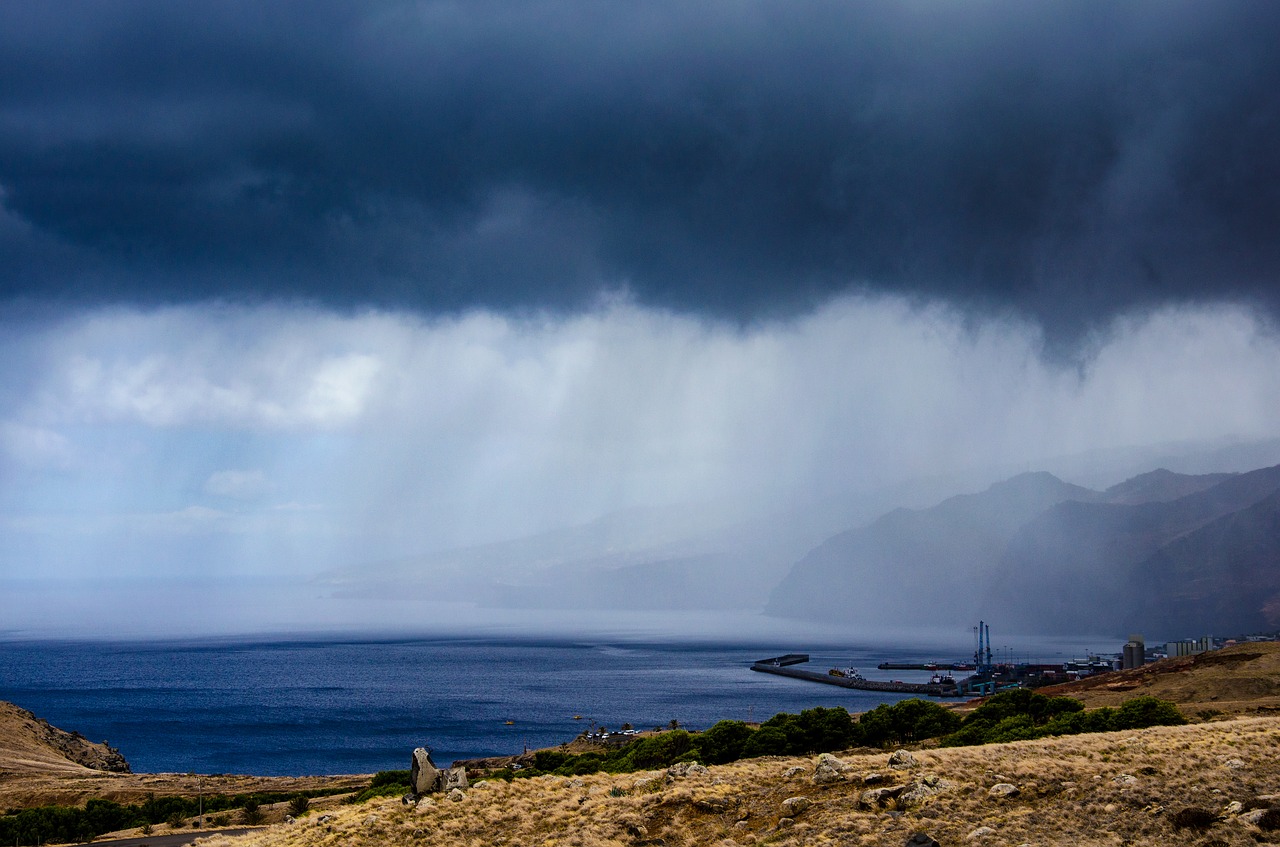Feature Image by mirobo on Pixabay
Article: The Shifting Scales of Western U.S. Landfalling Atmospheric Rivers Under Climate Change
Authors: Rhoades, A. M., Jones, A. D., Srivastava, A., Huang, H., O’Brien, T. A., Patricola, C. M., Ullrich, P. A., Wehner, M., and Zhou, Y.
While residents of the West Coast of the United States usually don’t have to worry about hurricanes, snow storms, or tornadoes, every winter they do experience extreme weather events known as atmospheric rivers. Atmospheric rivers are plumes of highly concentrated water vapor in the atmosphere. When they move over land, they can produce very heavy rainfall that can cause flooding and even trigger landslides. However, atmospheric rivers are not all bad; in fact, some might even say they’re essential. They provide up to half of California’s rainfall every year, which is beneficial for agriculture and water supply. Like all weather events, atmospheric rivers are impacted by climate change, so how will they be different in a few decades? This question is essential for water resource managers and regular residents of the West Coast, since atmospheric rivers can both help and harm their livelihoods.
To focus on the societal impacts of atmospheric rivers, a new study by Rhoades and his coauthors utilized a scale developed in Ralph et al. (2019) that categorizes atmospheric rivers based on the amount of rain they produce and their duration, similar to how the Saffir-Simpson scale categorizes hurricanes based on their wind speeds. The scale ranges from “primarily beneficial” Category 1 events to “primarily hazardous” Category 5 events. Category 4 and 5 atmospheric rivers are not only dangerous but also expensive, with some singular atmospheric river events costing over $1 billion in damages.
This new study used a state-of-the-art climate model to simulate atmospheric rivers in our current climate and also in an estimate of what the climate may be like at the end of the century. This climate change estimate is known as RCP8.5, which is the worst-case climate change scenario used in the recent Intergovernmental Panel on Climate Change (IPCC) reports. Compared to the model simulations of the current climate, the RCP8.5 simulations have more atmospheric rivers per year making landfall in the western US. The atmospheric rivers are also larger in size and last about a half day longer after making landfall. Related to these changes, the models predict that at the end of the century rainfall from atmospheric rivers will increase by over 7 inches per year. For cities like Los Angeles that only get about 15 inches of rain per year now, a 7 inch increase is significant! The RCP8.5 simulations also predict more events where multiple atmospheric rivers make landfall in a short period of time, sometimes called “atmospheric river families.” The landfalls of these families increase the risk of flooding since there’s not a lot of time for nature and infrastructure to absorb the rain from one atmospheric river before the next one hits.
How do all of these factors affect the Categories of the atmospheric rivers that make landfall? In the RCP8.5 simulations, there are less Category 1 and 2 and more Category 3, 4, and 5 atmospheric rivers. In fact, the number of Category 4 and 5 atmospheric rivers increases by 2 and 3.5 times, respectively. This implies that in the future, more atmospheric rivers that make landfall will be “primarily hazardous” instead of “primarily beneficial”, resulting in more danger to people and more economic costs. While the authors emphasize that they only used one climate model in this study, many of the results are consistent with other climate models used in other studies, which adds confidence to the overall conclusion that atmospheric rivers will be more dangerous in the future because of climate change.
Will Atmospheric Rivers Shift from Helpful to Harmful due to Climate Change? by Alyssa Stansfield is licensed under a Creative Commons Attribution-ShareAlike 4.0 International License.

